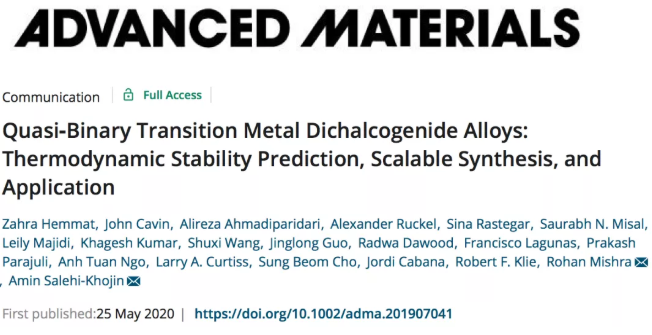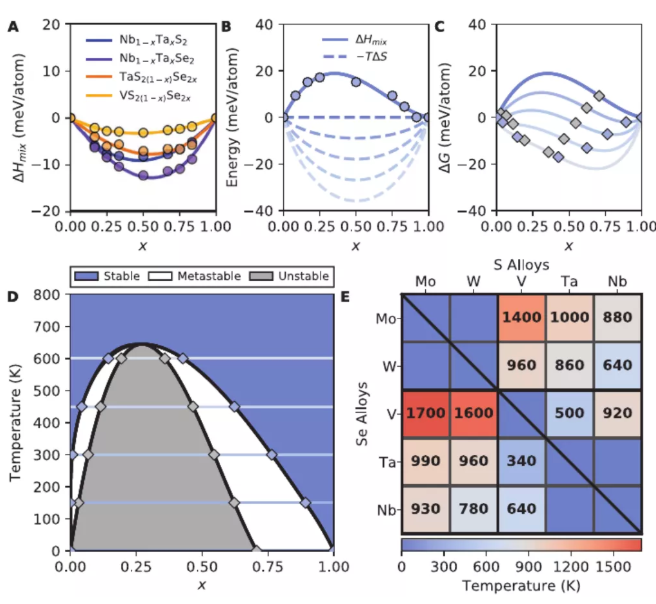AM: Quasi-binary transition metal disulfide phase diagram, scalable synthesis and application
QQ Academic Group: 1092348845
Detailed

Transition metal disulfide (TMDCs) alloys have a wide range of physical and chemical properties, including charge density waves to superconductivity and electrochemical activity. Although it has been proved that single-component TMDC has unique advantages, due to the lack of a certain understanding of its stability when different cations or chalcogen elements are contained in a single phase, there is still a broad development space for the composition of TMDC alloys.
In view of this, Amin Salehi-Khojin of the University of Illinois and Rohan Mishra of the University of Washington reported a theoretically guided synthesis method that can obtain undiscovered quasi-binary TMDC alloys by calculating predicted stability maps.

Highlights of this article
Key point 1. The equilibrium temperature-composition phase diagram calculated by the researchers using first-principles calculations can identify the stability of 25 quasi-binary TMDC alloys (including some involving non-equivalent cations), and through the use of scalable chemical vapor Twelve predicted alloys were synthesized by the transmission method.
Key point 2. The experimental results show that the synthesized alloy can be exfoliated into a two-dimensional structure. Some of the alloys exhibit: i) excellent thermal stability at high temperatures up to 1230 K; ii) under kinetic limited conditions ( Almost zero) High electrochemical activity for CO2 reduction reactions; iii) Excellent energy efficiency in high-rate lithium-air batteries; iv) High breakdown current density in interconnection applications.
This research provides an effective strategy for exploring the chemical and physical properties of other quasi-binary TMDCs and accelerating the discovery of multiple TMDC alloys for various high-impact applications.

Zahra Hemmat, et al, Quasi-Binary Transition Metal Dichalcogenide Alloys: Thermodynamic Stability Prediction, Scalable Synthesis, and Application, Adv. Mater. 2020
DOI: 10.1002/adma.201907041
https://doi.org/10.1002/adma.201907041
This information is sourced from the Internet for academic exchange only. If there is any infringement, please contact us to delete it immediately.
- Previous: Single Atom Nanoenzyme
- Next: IF 16! Stimulus-Respon


 Academic Frontier
Academic Frontier